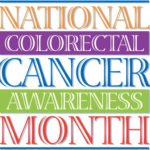Morning sickness is a common occurrence in pregnant women. It can cause mild nausea, a hyper sensitivity to smells, as well as weight loss during the first trimester.
While these are common symptoms of morning sickness, they should not be ignored especially, if they are persistent. Intense and consistent vomiting, weight loss and dehydration often present as symptoms of a more serious condition known as hyperemesis gravidarum. Symptoms typically develop around the 4th week of pregnancy and can last until the 20th week; in some cases longer.
It is very important for expecting mothers to pay attention to the symptoms associated with hyperemesis gravidarum as delayed or a lack of treatment can lead to complications for women and their unborn children.
Some complications are:
- Kidney failure
- Electrolyte imbalance
- Malnutrition
- Muscle weakness
- Low birth weight
- Premature birth
The treatment of hyperemesis gravidarum varies. At first, your doctor may suggest managing the symptoms with home remedies such as eating smaller and more frequent meals, drinking nutritional supplements to manage your electrolyte levels, vitamin replacement therapy or taking an antacid.
If these methods do not provide relief, your doctor may suggest a more aggressive treatment in a hospital setting.
If you are pregnant and experiencing symptoms of hyperemesis gravidarum, you should seek the advice of a doctor. For more information or to make an appointment with an obstetrician or gynecologist at Flushing Hospital Medical Center, please call 718-670-5239.
All content of this newsletter is intended for general information purposes only and is not intended or implied to be a substitute for professional medical advice, diagnosis or treatment. Please consult a medical professional before adopting any of the suggestions on this page. You must never disregard professional medical advice or delay seeking medical treatment based upon any content of this newsletter. PROMPTLY CONSULT YOUR PHYSICIAN OR CALL 911 IF YOU BELIEVE YOU HAVE A MEDICAL EMERGENCY.






 Chronic Fatigue Syndrome (CFS) is a chronic illness that is of unknown origin. It typically leaves the patient feeling extremely tired, it may get worse with mental or physical activity, and usually does not improve with rest.
Chronic Fatigue Syndrome (CFS) is a chronic illness that is of unknown origin. It typically leaves the patient feeling extremely tired, it may get worse with mental or physical activity, and usually does not improve with rest.